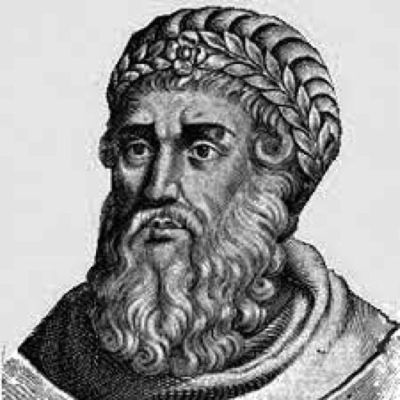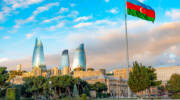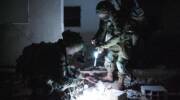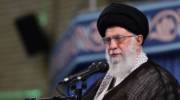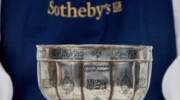Herod the Great built the structure over the Cave of the Patriarchs.
By Nosson Shulman, Licensed Tour Guide
“Some of the children of Judah (returning from the Babylonian exile) settled in the villages, in their open areas: in Kiryat Arbah (i.e. Hebron) and its suburbs.” (Nehemiah 11:25)
After the destruction of the first Temple in 422 BCE (some say 586 BCE) the Jewish people were exiled to Babylonia. Never before, had a people been driven from their homeland yet observed their customs for more than a few years. It would only be a matter of time until they assimilated and ceased being a distinct nation of their own.
But God had different plans!
Fifty years later the mighty Persian Empire conquered Babylonia and its territory, becoming the new rulers of Israel. Miraculously, during this time the Jewish people had remained a distinct nation who had preserved their religion. Their yearning to return one day to their homeland had never ceased.
The new Persian King Cyrus issued a proclamation that the Jewish people had permission to return to Israel. He even gave them the right to rebuild their Temple.
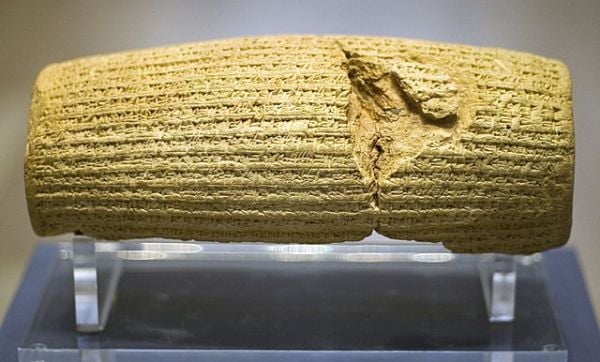
The “Cyrus Cylinder”, found in excavations, was the written proclamation allowing Jews to return to Israel. Today, the original is in the British Museum. (Wikimedia Commons)
Under Ezra and Nehemiah, 50,000 Jews returned to Israel with some moving to Hebron (Nehemiah 11:25). In their 50-year absence the Edomites had moved into the Hebron region, settling in the once Jewish land. Now the two peoples, who had waged war on and off for centuries, had to live side by side together
The Persian empire was eventually conquered by the Greeks. As time passed, they began to oppress the Jewish inhabitants, including passing capital laws which restricted Jewish religious practices. In 167 BCE a small group of Torah observant rebels (known as the Maccabees) revolted, overthrew the Greeks and re-established an independent Jewish state.
Enter the Romans
Judah the Maccabee overtook Hebron, and his successors made it into a Jewish city. Several generations later (circa 125 BCE) the Maccabees forcibly converted the Idumeans to Judaism. Forced conversions are not valid in Judaism, but by this time the Maccabean rulers were no longer fully Torah observant.
One of those Idumeans who became “Jewish” was Antipater, the father of the infamous King Herod.
When the Romans took over the Holy Land in 63 BCE, Antipater assisted the Romans with the conquest. As a reward for his help, Rome appointed Antipater’s son Herod when he became of age, to be the puppet King of Israel. During Herod’s reign, the Romans had the final say on all decisions.
Herod built a massive structure over the cave of the Patriarchs in Hebron where Abraham, Isaac, Jacob, and their wives were buried. This structure still stands at its original heights in pristine shape (for more on the Cave of the Patriarchs, click here).
In Herod’s time, Hebron’s Jewish population was largely religious.
Also, Jews from all over the world continued to come and pray at the Cave of the Patriarchs, the second holiest site in Judaism after the Temple in Jerusalem.
As time progressed, the Roman rulers of the land began to oppress its Jewish population. By 66 CE Roman rule had become so unbearable, that the entire country revolted and expelled the Roman army from its borders. The Romans began sending legion after legion into Israel in order to re-conquer it.
And by 73 BCE Though the Romans suffered heavy losses, by 73 BCE, they put down the rebellion, destroyed the Temple and turned Jerusalem into inhabitable rubble.
The Roman Emperor Titus thought that the Jewish people would not be able to sustain their religion without their precious Temple. This was because anytime the Romans had conquered lands, they first destroyed their local religious places of worship. Subsequently, its inhabitants would take on the Roman religion because the Roman “gods” had “beaten” their “gods”.
Without a Temple, the Romans reasoned, the Jews would become Roman and cease being a distinct people.
But yet again, God had different plans.
To be continued.
Click for Part 1 and Part 2 of this Hebron series.
Nosson Shulman is a journalist and Licensed Tour Guide in Israel specializing in Biblical tours. To allow tourists to experience Israel during the Corona era, he created the new hit Israel tour video series, which brings Israel to the home of viewers by simulating actual tours. To check out his free sneak preview tour videos, click here. To view sample tour itineraries or to inquire about private tour opportunities with a personalized itinerary on your next trip to Israel, click here.
